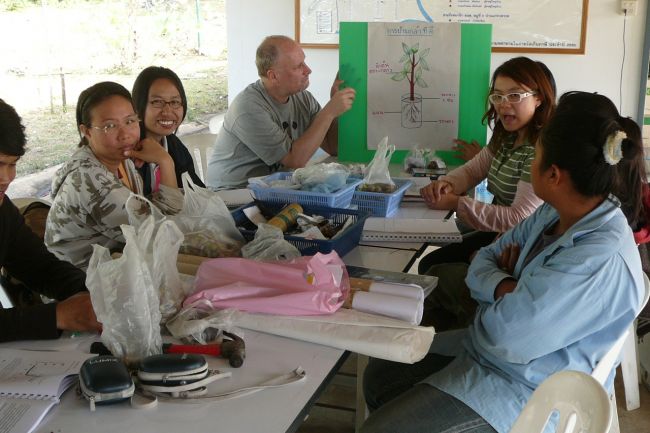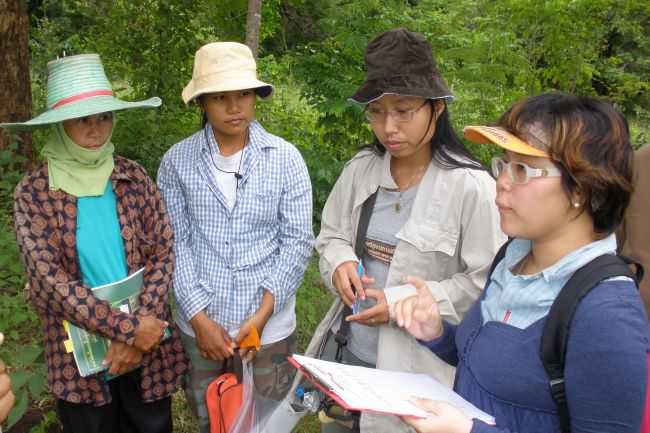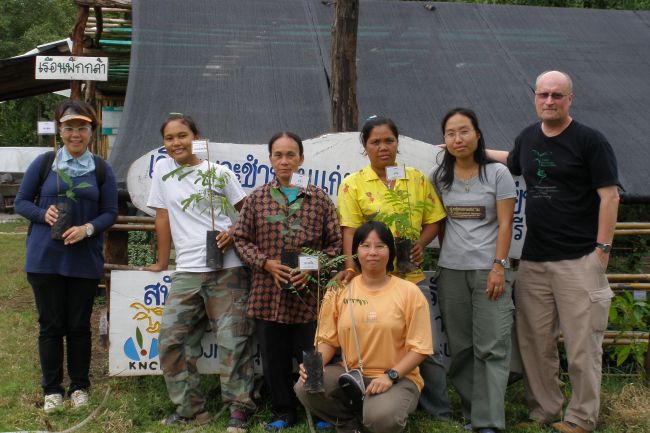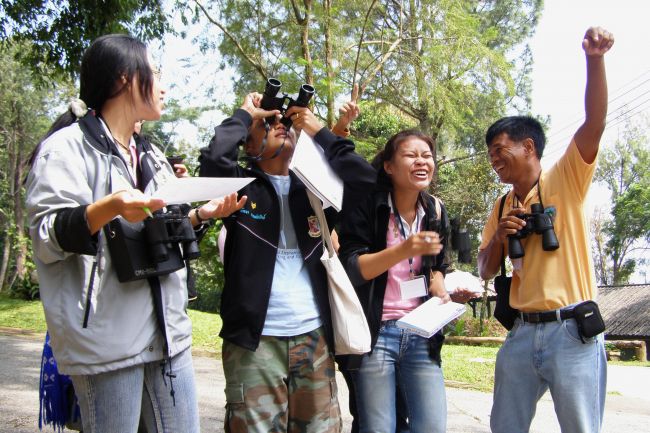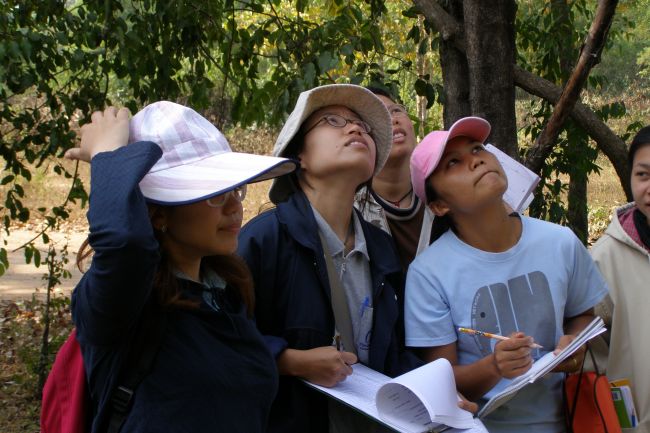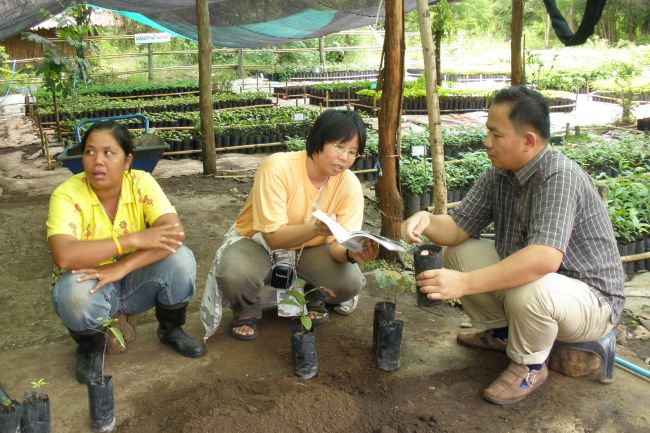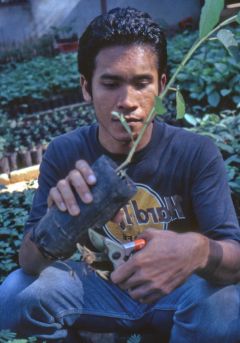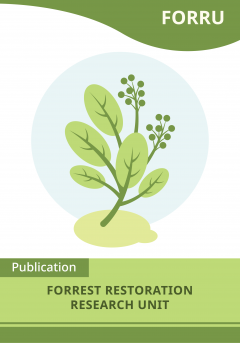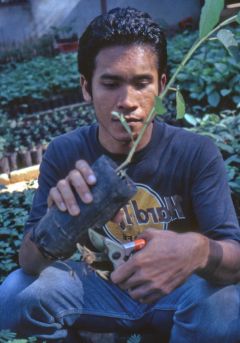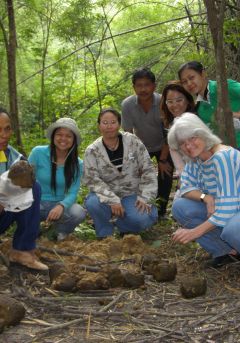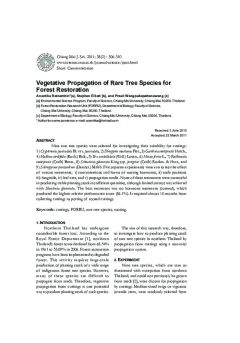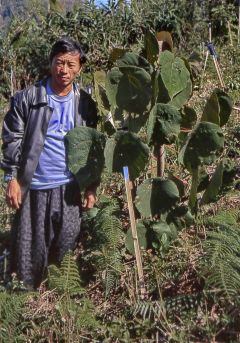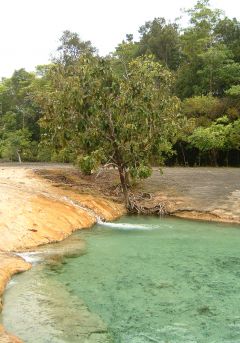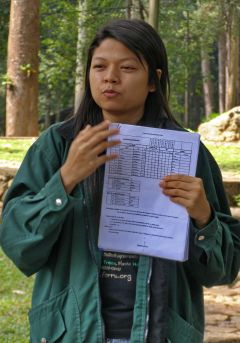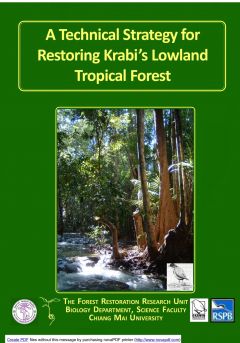
This project created an original knowledge-base to restore bamboo-deciduous forest in Western Thailand, particularly to create habitat for elephant conservation and to reduce human-elephant conflicts around the Salakpra Conservation Area, Kanchanaburi Province. The project was funded by the Keidanren Nature Conservation Fund with the Zoological Society of London (ZSL) and was implemented by the Elephant Conservation Network (ECN), with FORRU-CMU assisting with technical matters.
The objectives were:
- to develop local capacity to implement forest restoration activities;
- to determine tree species composition of the main forest formations in Salakpra;
- to determine optimal seed collection times/treatments to hasten seed germination & seedling growth;
- to develop and manage a community-based forest tree nursery and planting sites and
- to present initial results to stakeholders to empower them to implement forest restoration.
Activities and outputs
FORRU-CMU's inputs consisted mostly of training ECN staff on restoration theory and practices; training local people in nursery techniques so they could grow saplings of the required tree species and assisting with monitoring trial plots and analysing the data, culminating in a technical manual (in Thai) on how to restore the bamboo-deciduous forest that dominated lowland areas of Salakpra—bamboo being the main food of the several hundred wild elephants that inhabited the protected area.
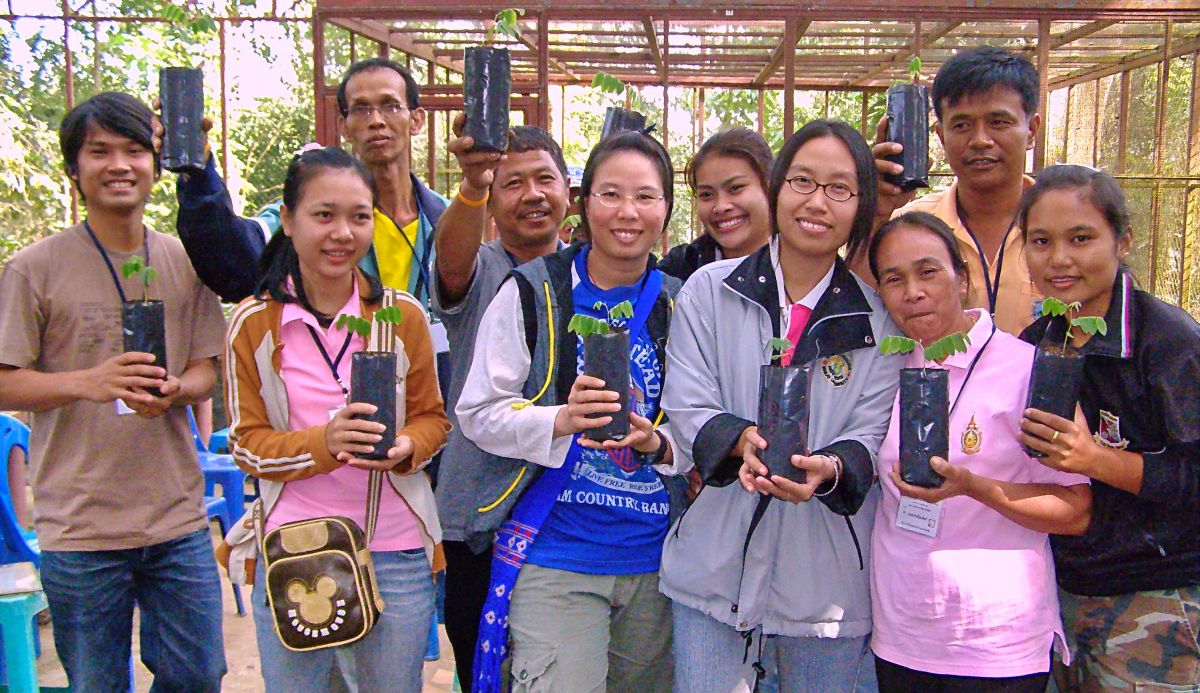
The final project activity, in September 2011, was an information-sharing workshop, with local foresters, community leaders, villagers and NGO representatives, at which the results of nursery experiments and field trials were presented, along with the resultant best practices detailed in the manual.
Field Performance of Planted Trees
Monitoring is essential for adaptive management. Click here to learn how to measure tree survival and growth and find out if your restoration plan is working.
51: Reproductive Ecology and Propagation of Fig Trees (Ficus spp.) as Framework Trees for Forest Restoration
ABSTRACT: Fig trees (Ficus spp.) have been promoted as framework species for tropical forest restoration, because they are considered to be keystone species. This study investigated the...
52: Research towards refining framework forestry.
FORRU has conducted extensive research to refine the FSM. FORRU staff periodically enters the target forest area to collect data on the fruiting and flowering of different tree species....
53: The phenology of dioecious Ficus spp. tree species and its importance for forest restoration projects
ABSTRACT: Ficus spp. are keystone tree species in tropical forest ecosystems and therefore, it is vital to include them in tree planting for forest restoration programs. However, lack of knowledge...
54: การฟื้นฟูป่าเสื่อมโทรมในพื้นที่แห้งแล้ง : แนวคิดและแนวทางปฎิบัติเพื่อการฟื้นฟูป่าในภาคตะวันตก
รายงานการรวบรวมองค์ความรู้จากโครงการ "การวิจัยเพื่อการฟื้นฟูป่า" ในชุมชนหมู่บ้านแก่งปลากด ที่มีพื้นที่ติดกับเขตรักษาพันธุ์สัตว์ป่าสลักพระ มีการดำงานร่วมกันระหว่าง เครือข่ายอนุรักษ์ช้าง (ECN)...
55: Vegetative propagation of rare tree species for forest restoration
When a tree species is rare and fruits infrequently, vegetative propagation may be the only way to build up planting stock for restoration projects. Anantika, one of our Environmental Science...
56: Fallow to forest: Applying indigenous and scientific knowledge of swidden cultivation to tropical forest restoration
Rotational swidden cultivation systems, with fallow periods long enough for the regeneration of secondary forests are capable of maintaining forest cover and plant diversity in a dynamic balance...
57: Vascular flora of the Emerald Pool area, Krabi Province, southern Thailand
ABSTRACT: The Emerald Pool is situated in remnant lowland (25-75 m), seasonal, fresh-water, swamp forest on limestone bedrock. Primary, evergreen, seasonal, hardwood forest, often with bamboo and...
58: Trees and Ground Flora Diversity of Framework Species Plantation Plots and Dong Seng Forest, Mae Rim District, Chiang Mai Province
ABSTRACT: The framework species method (FSM), combined with assisted natural regeneration (ANR) aims to restore forest biomass, structure, biodiversity and ecological functioning to levels similar...
59: Bird communities and seedling recruitment in restoring seasonally dry forest using the framework species method in Northern Thailand
ABSTRACT: This study examined the effects of framework trees, planted in 1998, and bird community on the natural recruitment of tree seedling species in a forest restoration experiment designed to...
60: A Technical Strategy for Restoring Krabi’s Lowland Tropical Forest
This report is one of the outputs from the project “Gurney’s Pitta Research and Conservation in Thailand and Myanmar”, implemented by the U.K.’s Royal Society for the Protection of Birds (RSPB)...

